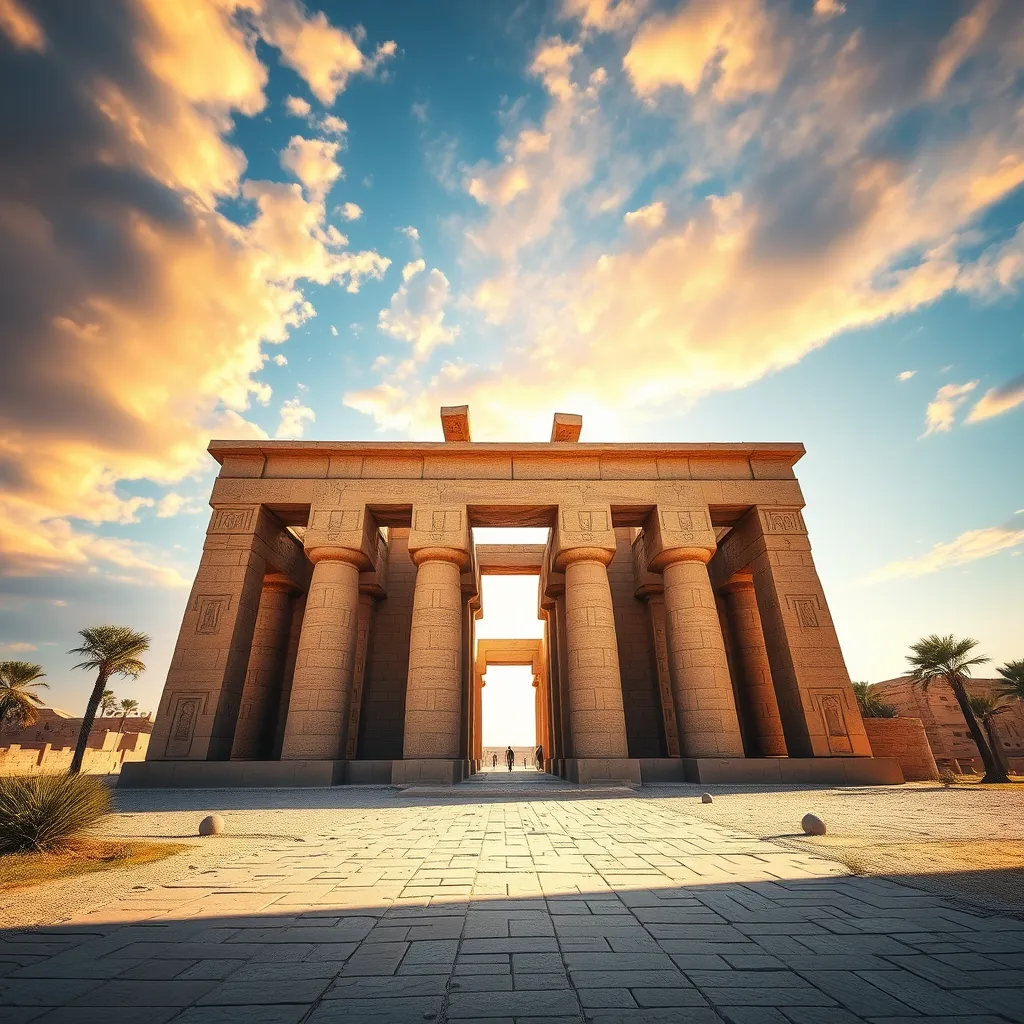Karnak: The Mighty Temple of Amun-Re
I. Introduction
The Karnak Temple complex is one of the most significant and largest religious sites in ancient Egypt, dedicated primarily to Amun-Re, the chief deity of the Egyptian pantheon. Located near Luxor, Karnak is not only a testament to the architectural prowess of ancient Egyptians but also a reflection of their complex religious beliefs and practices. This article aims to explore the historical, architectural, religious, artistic, archaeological, and modern significance of Karnak Temple, providing a comprehensive overview of this magnificent site.
II. Historical Background
The origins of the Karnak Temple complex date back to the Middle Kingdom of Egypt, approximately 2055 to 1650 BCE. Initially established as a modest shrine, it evolved into a vast temple complex over the centuries.
- Middle Kingdom: The first structures began to take shape under Pharaoh Senusret I.
- New Kingdom: The temple reached its zenith during the reign of Pharaohs such as Hatshepsut, Thutmose III, and Ramses II, who contributed significantly to its expansion and embellishment.
The cultural significance of Karnak cannot be overstated; it served as a major religious center and a symbol of the power and wealth of ancient Egyptian civilization. It was here that the pharaohs sought divine favor and legitimization of their rule through their connection to Amun-Re.
III. Architectural Marvels
Karnak Temple is renowned for its grand scale and intricate design. The layout of the complex is vast, covering over 100 hectares and comprising several temples, chapels, and pylons.
- Hypostyle Hall: One of the most iconic structures within Karnak, this hall features 134 massive columns, arranged in 16 rows. The towering columns, adorned with elaborate carvings, create a breathtaking atmosphere.
- Sacred Lake: The large lake served ritual purposes and was used for purification ceremonies.
- Pylons: The grand entrance gates, known as pylons, are monumental structures that served as gateways to the temple’s inner sanctum.
Unique architectural features, such as the alignment of the temple with celestial events and the use of symbolic motifs, illustrate the deep spiritual significance embedded in the design of the temple complex.
IV. Religious Significance
Amun-Re was revered as the creator god and the king of the gods in ancient Egyptian religion. His role as a chief deity was central to the spiritual life of the Egyptians.
- Rituals and Ceremonies: Karnak was the site of numerous important rituals, including the Opet Festival, which celebrated the annual flooding of the Nile and the unity between pharaoh and the deity.
- Spiritual Influence: The temple played a crucial role in shaping ancient Egyptian spirituality and cosmology, providing a space for worship and communication with the divine.
The rituals conducted at Karnak emphasized the connection between the pharaoh, the gods, and the people, reinforcing the social and religious hierarchy of ancient Egyptian society.
V. Artistic Elements
The artistic elements found at Karnak are a remarkable testament to the skill of ancient Egyptian artisans.
- Hieroglyphs and Inscriptions: The walls of the temple are adorned with intricate hieroglyphs that narrate the achievements of the pharaohs and religious texts.
- Iconography: Wall reliefs depict gods, goddesses, and scenes of worship, often rich with symbolism that conveys deeper meanings.
- Statues and Sculptures: The presence of monumental statues, such as those of Ramses II and Amun-Re, showcases the importance of divine and royal figures in ancient Egyptian belief.
These artistic elements not only served decorative purposes but also functioned as tools for communication and preservation of religious beliefs.
VI. Archaeological Discoveries
Over the years, Karnak has been the focus of extensive archaeological research, yielding significant findings that have deepened our understanding of ancient Egyptian civilization.
- Major Excavations: Notable excavations have uncovered various artifacts, structures, and inscriptions that shed light on the temple’s history and function.
- Contributions of Archaeologists: Pioneering archaeologists like Howard Carter and Ahmed Fakhry have made vital contributions to the study of Karnak.
- Ongoing Research: Current efforts continue to uncover more about the temple’s significance and the daily life of its ancient worshippers.
Preservation efforts are also ongoing to protect this invaluable site from the ravages of time and tourism.
VII. Karnak in Modern Times
Today, Karnak Temple is one of Egypt’s most visited tourist attractions, drawing millions of visitors each year.
- Impact of Tourism: While tourism brings economic benefits, it also poses challenges such as wear and tear on the ancient structures.
- Conservation Challenges: The temple faces issues of pollution, climate change, and the need for restoration of its many features.
- UNESCO World Heritage Site: Recognized for its cultural significance, Karnak was designated a UNESCO World Heritage Site, highlighting the need for its protection and preservation.
Efforts by national and international organizations aim to balance tourism with the conservation of this ancient marvel.
VIII. Conclusion
Karnak Temple stands as a powerful symbol of ancient Egyptian history and culture. Its grandeur reflects the ingenuity of its creators and the depth of their spiritual beliefs.
The legacy of Amun-Re and the rituals performed at Karnak continue to evoke fascination and respect. As we explore and appreciate this ancient site, it is essential to recognize our responsibility to protect and preserve it for future generations.
In conclusion, Karnak is not just a relic of the past; it is a living testament to the enduring legacy of one of history’s most remarkable civilizations.




